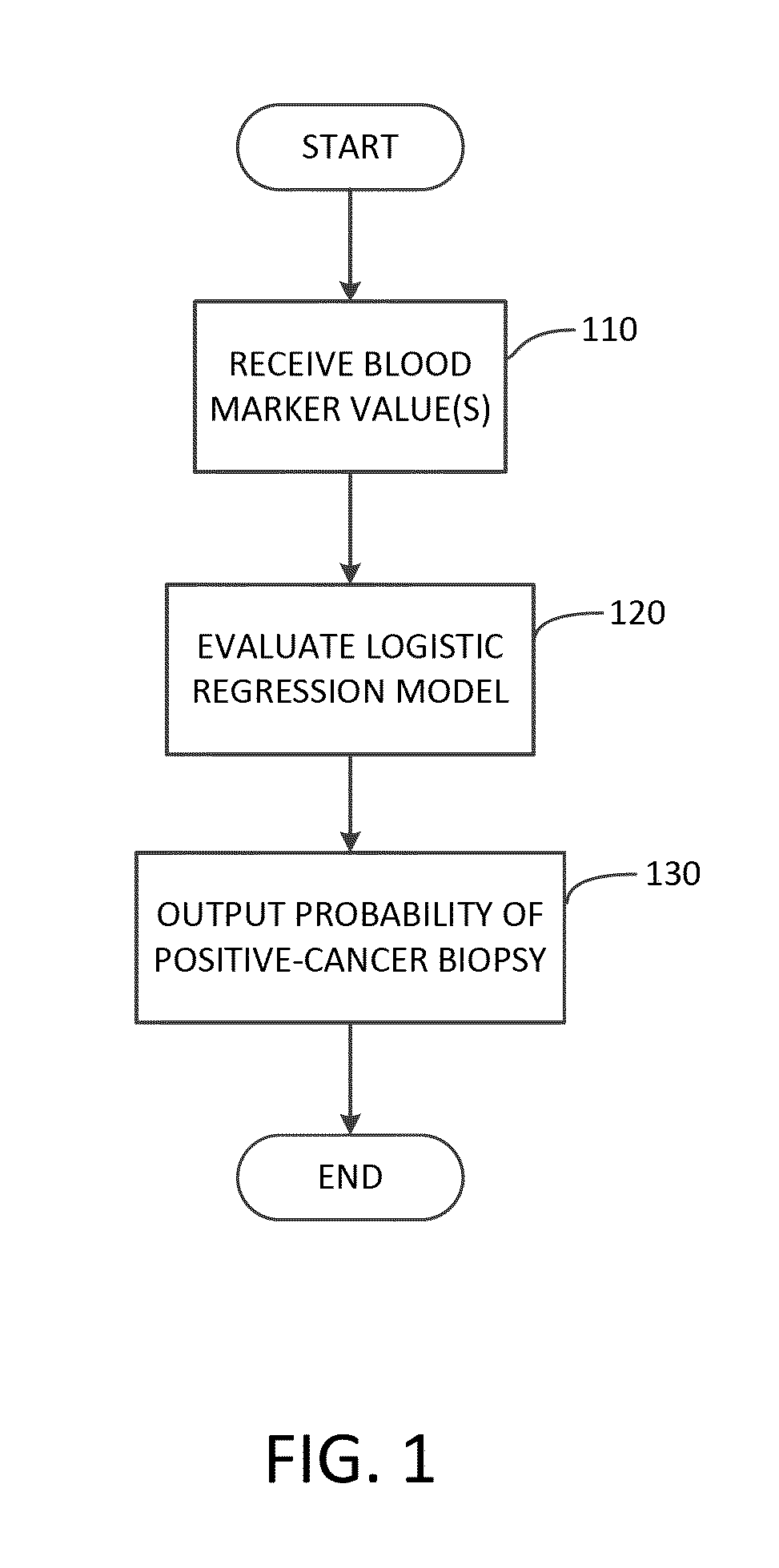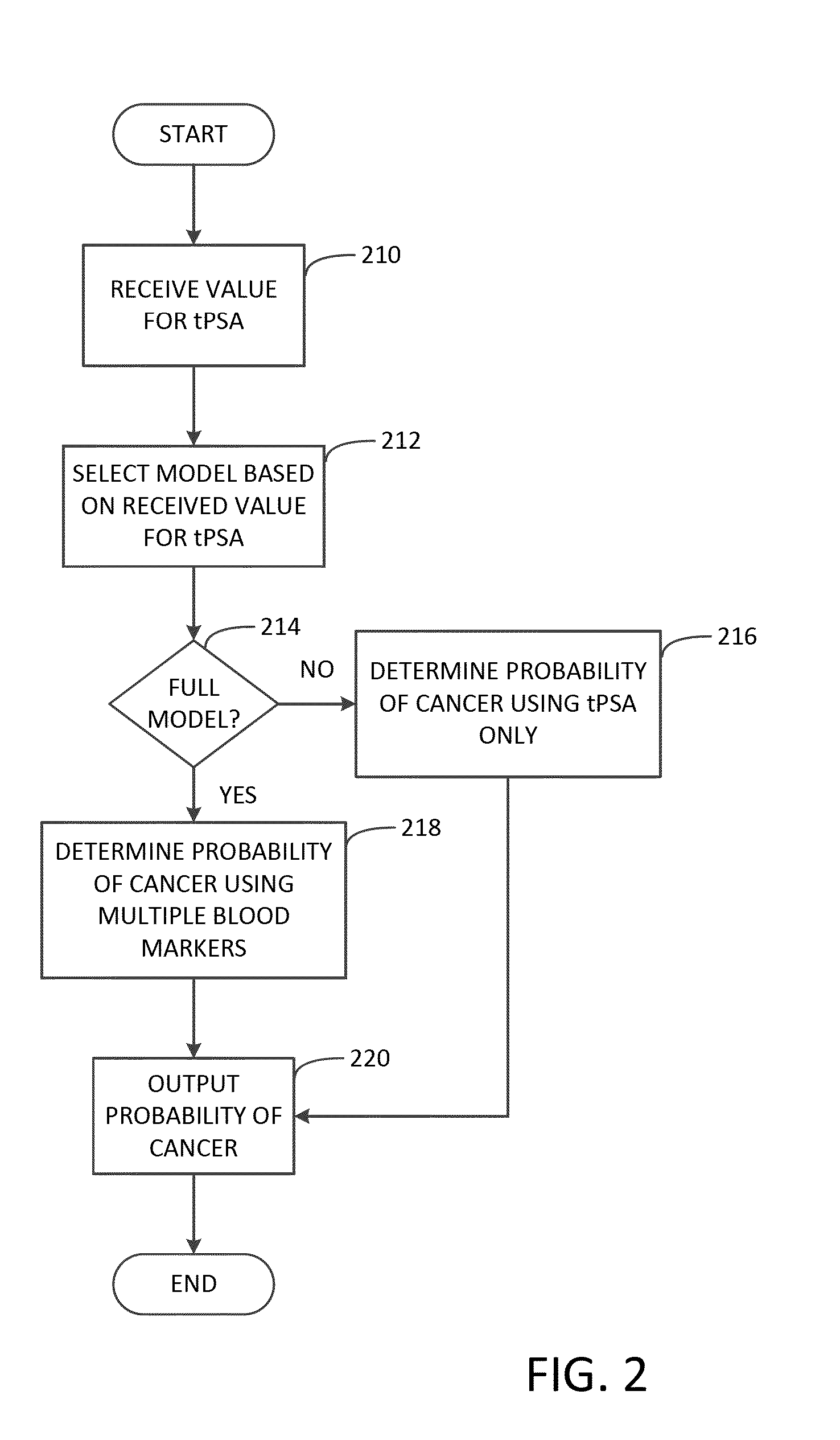Methods and apparatuses for predicting risk of prostate cancer and prostate gland volume
a prostate cancer and risk technology, applied in the field of methods and apparatuses for predicting prostate cancer and/or prostate gland volume, can solve the problems of not being able to predict the outcome of prostate biopsy, requiring more or less extensive clinical work-up, and none of these markers on their own constitute good predictors of prostate biopsy outcom
- Summary
- Abstract
- Description
- Claims
- Application Information
AI Technical Summary
Benefits of technology
Problems solved by technology
Method used
Image
Examples
example 1
Studies
[0277]In total, seven separate studies using the statistical model have been carried out. The studies comprise a total of 7,647 men with elevated PSA and 2,270 cancers, with five studies constituting external validation. Further, the studies were systematically designed to cover a wide range of clinical scenarios. Perhaps most importantly, one of the studies included a natural history approach. Because biopsy outcome is a surrogate endpoint—what matters is not whether a man has prostate cancer, but whether he is at risk for a prostate cancer that will affect his life—the ideal study would take blood from patients, then follow them for several years in the absence of further screening to determine prostate cancer outcomes. We have been fortunate enough to have been able to conduct such a study [Vickers, A. J., et al., Cancer Epidemiol Biomarkers Prey, 2011. 20(2): p. 255-61].
[0278]The Malmö Diet and Cancer cohort is part of a large population-based study to identify dietary ri...
example 2
Prophetic
[0305]This is a prophetic example describing the use of a cassette and analyzer to perform an assay to detect iPSA, fPSA, tPSA and hK2 in a sample by electrolessly depositing silver onto gold particles that are associated with the sample. FIG. 14 includes a schematic illustration of a microfluidic system 1500 of a cassette used in this example. The cassette had a similar shape to cassette 520 shown in FIG. 7.
[0306]The microfluidic system included analysis regions 1510A-1510F, waste containment region 1512, and an outlet 1514. The analysis regions included a microfluidic channel 50 microns deep and 120 microns wide, with a total length of 175 mm. The microfluidic system also included microfluidic channel 1516 and channel branches 1518 and 1520 (with inlets 1519 and 1521, respectively). Channel branches 1518 and 1520 were 350 microns deep and 500 microns wide. Channel 1516 was formed of sub-channels 1515, which were 350 microns deep and 500 microns wide located on alternating...
PUM
| Property | Measurement | Unit |
|---|---|---|
| PSA | aaaaa | aaaaa |
| threshold | aaaaa | aaaaa |
| volume | aaaaa | aaaaa |
Abstract
Description
Claims
Application Information
 Login to View More
Login to View More - R&D
- Intellectual Property
- Life Sciences
- Materials
- Tech Scout
- Unparalleled Data Quality
- Higher Quality Content
- 60% Fewer Hallucinations
Browse by: Latest US Patents, China's latest patents, Technical Efficacy Thesaurus, Application Domain, Technology Topic, Popular Technical Reports.
© 2025 PatSnap. All rights reserved.Legal|Privacy policy|Modern Slavery Act Transparency Statement|Sitemap|About US| Contact US: help@patsnap.com



